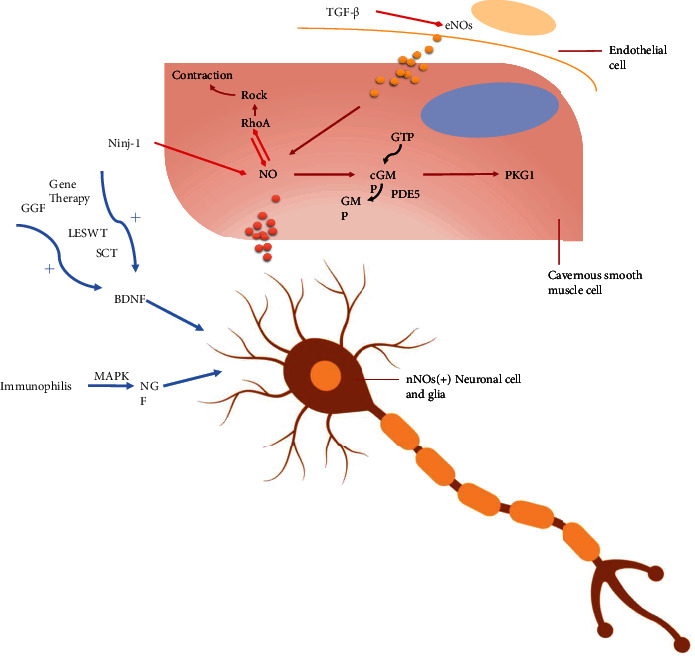Figure 1.

The mechanisms of neurological injury repair. Physiological ED, particularly cavernous nerve damage ED, can be identified as a potential target for different gene therapies. There is an interrelationship between nerve and smooth muscle cells, depicted here, and a simple interrelationship between nerve and smooth muscle cells and between endothelial and smooth muscle cells. All three target cells involved in ED can be targets for different potential gene therapies. The interrelationships between smooth muscle cells and between endothelial and smooth muscle cells are contracted and antagonised, and their diastolic pathways can be enhanced by various gene therapies. Gap junctions between smooth muscle cells allow efficient cell-to-cell signaling. The gene therapy included a large number of trophic factors, not all of which are shown in the figure because they do not or cannot directly influence erectile signaling. Abbreviations: ANG-1: angiopoietin-1; BDNF: brain-derived neurotrophic factor; cGMP: cyclic guanosine monophosphate; eNOS: endothelial nitric oxide synthase; GDNF: glial cell neurotrophic factor; nNOS: neuronal nitric oxide synthase; NO: nitric oxide; PKG1: cGMP-dependent protein kinase G1; RhoA: ras homologous family member type A.
